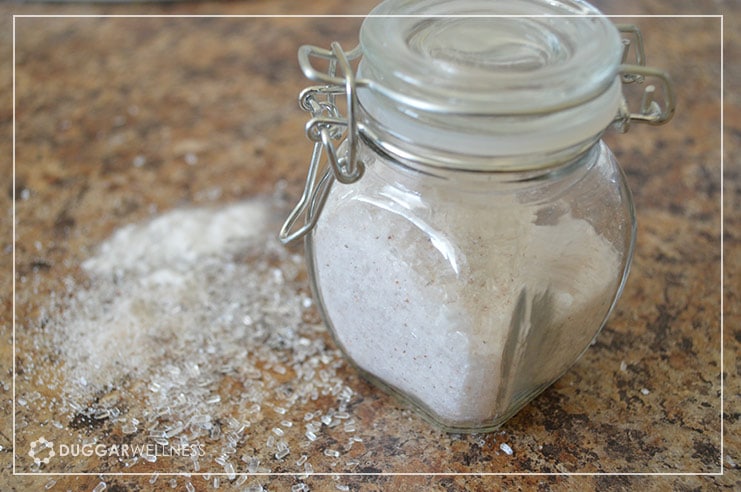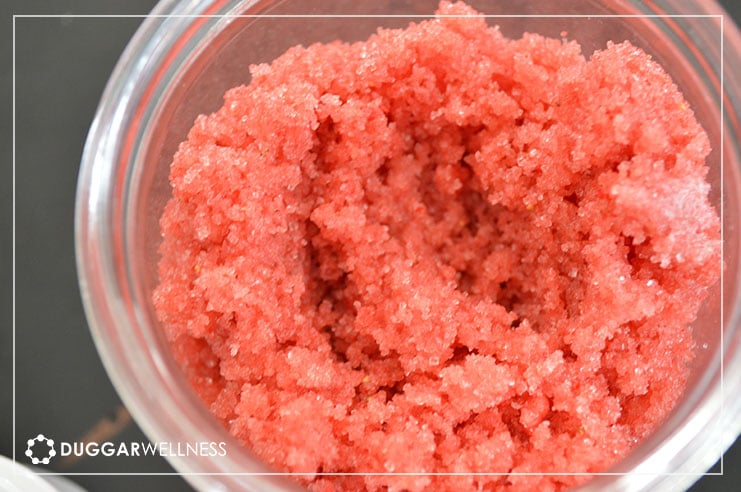It has been about twenty years since I stopped using conventional beauty care products. When I was a young mommy, a friend taught me the dirty little secret about the ingredients that were in the shampoo that I was using on my brand new baby. The shampoo professed to be gentle and tear-free and just for babies so it had to be safe, right? So I thought.
Back then I hadn’t learned to be skeptical of labels, in fact I probably hardly ever read them. The decision to purchase a product was driven by price or the design on the packaging and not by the ingredient list.
As I began to learn about natural health I soon discovered that this particular baby shampoo contained ingredients that had not been proven safe for humans or had even been shown to be carcinogenic. I felt duped to have been so trusting of companies to have our health and well-being in mind.
Are there chemicals lurking in your cosmetics and personal care items? Maybe. According to the FDA 1 in 5 personal care products contains a substance that generates formaldehyde, a known human carcinogen. Because manufacturers are not required to disclose ingredients on their labels, we wouldn’t know if formaldehyde is present or not.
The U.S. government and the World Health Organization have both classified formaldehyde as carcinogenic when it’s fumes are inhaled. It is also a potent skin irritant and allergen. Companies don’t dump formaldehyde into their products, instead they take the back-door approach and use one of several chemicals that are known as “formaldehyde-releasers” to preserve their products. When added to water these chemicals will decompose slowly over time to form molecules of formaldehyde. This reaction is occurring at a steady rate while the product sits on the shelves at the grocery store and in your bathroom cabinet.
So what should you look for on the product label? Let’s play detective.
The the top 7 formaldehyde-releasing chemicals.
- DMDM hydantoin
- Imidazolidinyl urea
- Diazolidinyl1 urea
- Quaternium-15
- Bronopol (2-bromo-2nitriprpane-1,3-diol)
- 2-Bromo-5nitro-1,3-dioxane
- Hydroxymethyglycinate
The FDA does not restrict the amount of formaldehyde-producing chemicals can be present in personal care items. I’m not trying to be an alarmist, because really the risk may be small but, keep in mind that your personal care items are not the only place you are exposed to harmful chemicals. These chemicals are present in cigarette smoke, vehicle exhaust, pressed-wood products and fuel burning appliances such as gas stoves. In my opinion personal care products make an unnecessary exposure to this harmful chemical.
It’s not that difficult to avoid exposure to products containing formaldehyde-producing compounds. Here are three ways that you can begin today:
- Check the label for any of the top 7 chemical listed above
- Let the Environmental Working Group do the research for you.
- Or easiest of all, avoid these chemicals all together by making your own beauty care products at home.
I avoided option #3 all together for a really long time, simply because I was a bit intimidated. I knew people were making their own products but I didn’t know how to get started and I certainly didn’t want to have my products not work. Well, I finally got tired of spending lots of money at the grocery store and finally just tried it. It was surprisingly easy and I just love the clean but not over-powering chemical smell.
If I can do it, so can you. Remember, if it isn’t safe to put in your body, you shouldn’t put it on your body. If you wouldn’t guzzle the bottle of shampoo in your shower or lick the extra lotion off your hands then you might want to think twice about putting it onto your skin and hair.
Try these DIY beauty care products:
Sugar Scrub


 160 N Main, Bountiful, UT 84010
160 N Main, Bountiful, UT 84010  801-677-7878
801-677-7878


